China floor burnisher
floor burnisher are the key to achieving a high-gloss finish on hard floors. Their durability and high performance make them ideal for commercial and industrial environments. They work quickly to create a shiny, like-new look.
At BISON, we offer a wide range of quality floor burnishers at great prices, ensuring superior reliability and performance. Whether you need daily maintenance or heavy-duty polishing, our polishers deliver exceptional results with minimal effort. As a trusted OEM in China, we specialize in providing durable and practical solutions for your floor care needs. Buy a wide range of floor burnishers at wholesale prices from BISON, a Chinese OEM today.
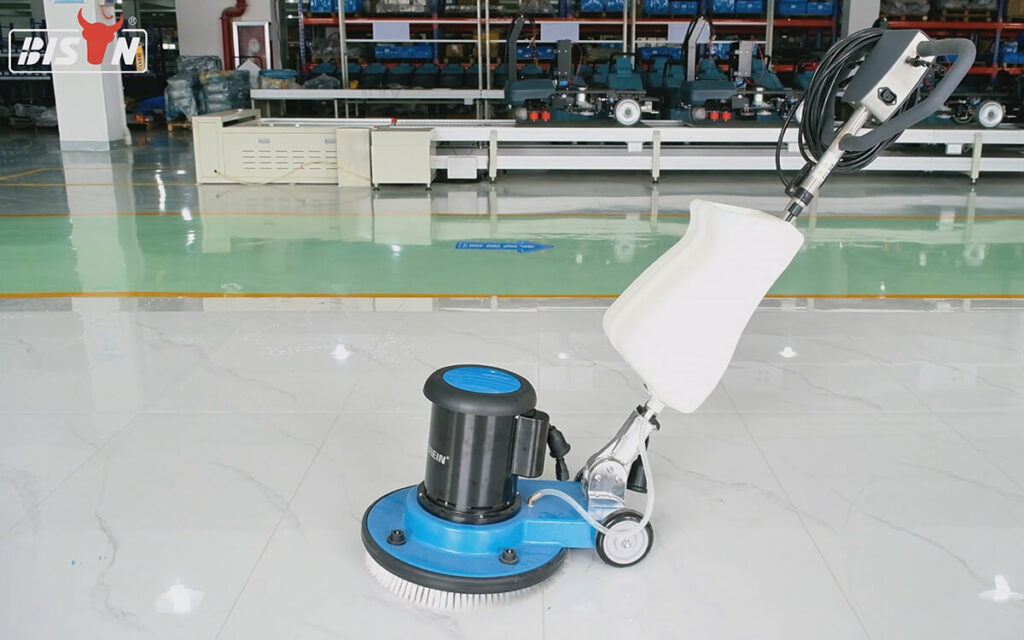
floor burnisher
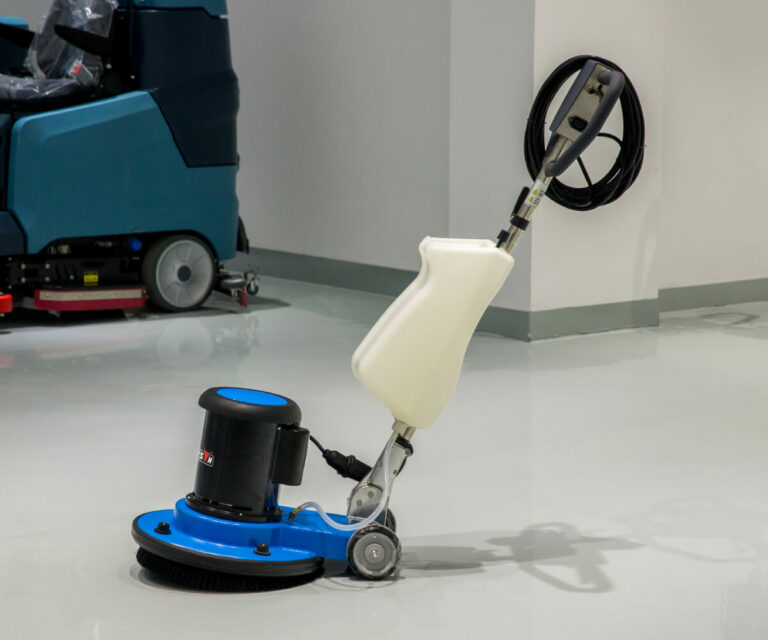
high-speed electric floor burnisher
BISON Manufacturing is proud to provide customized high-speed electric floor burnisher solutions and reliable after-sales service to distributors and dealers.
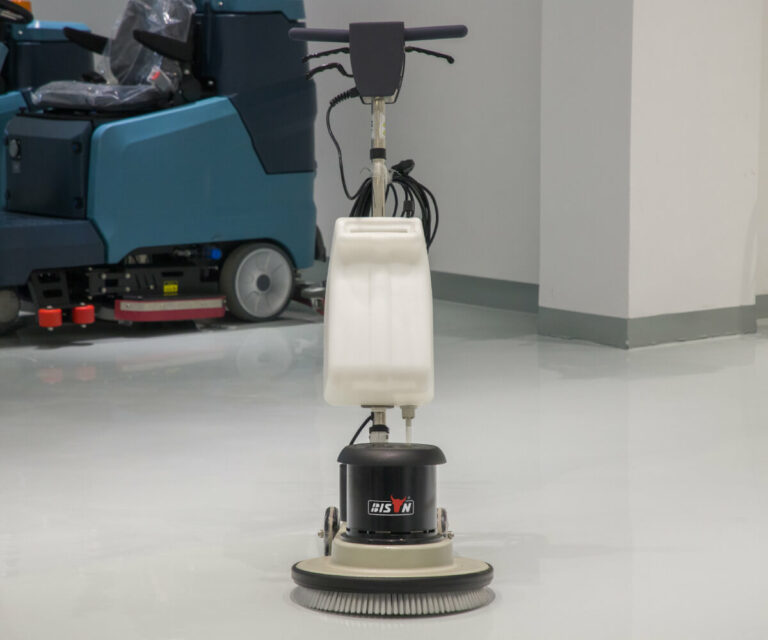
walk-behind floor burnishing machine
Offer your clients top-notch floor maintenance with the BISON BS-17 Walk-Behind Floor Burnishing Machine, built for professional contractors and facility managers.
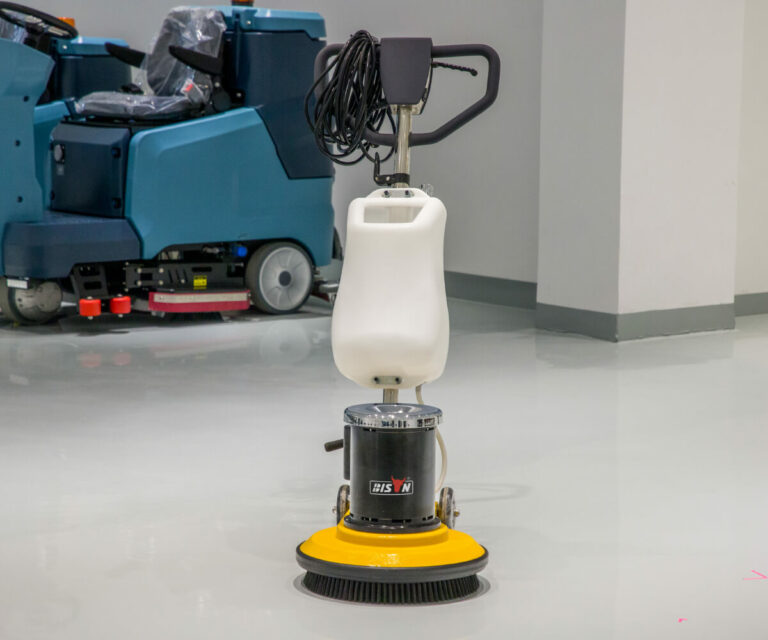
heavy duty single pad burnisher
As a leading manufacturer and factory of professional cleaning equipment, BISON’s heavy duty single pad burnisher ensures high-speed performance and durability.
Contact us today to find the best floor burnisher solution for your business.
Applications of floor burnisher
Floor burnishers are essential in many industries. Their ability to keep floors clean and shiny makes them an indispensable tool in a variety of situations. Let’s take a closer look at how these machines are used in different industries.
In manufacturing/distribution centers
In manufacturing and distribution centers, floor maintenance is essential for safety and efficiency. Clean, shiny floors reduce the risk of accidents and promote smooth operations. High-speed polishers are particularly useful because they produce a high-gloss finish, improve visibility, and give surfaces a polished look.
In healthcare facilities
Hygiene is essential in healthcare facilities. Floor burnisher help maintain strict cleanliness standards by preventing the spread of bacteria and pathogens. In these environments, low-speed polishers are often used to scrub, polish, and clean a variety of surfaces.
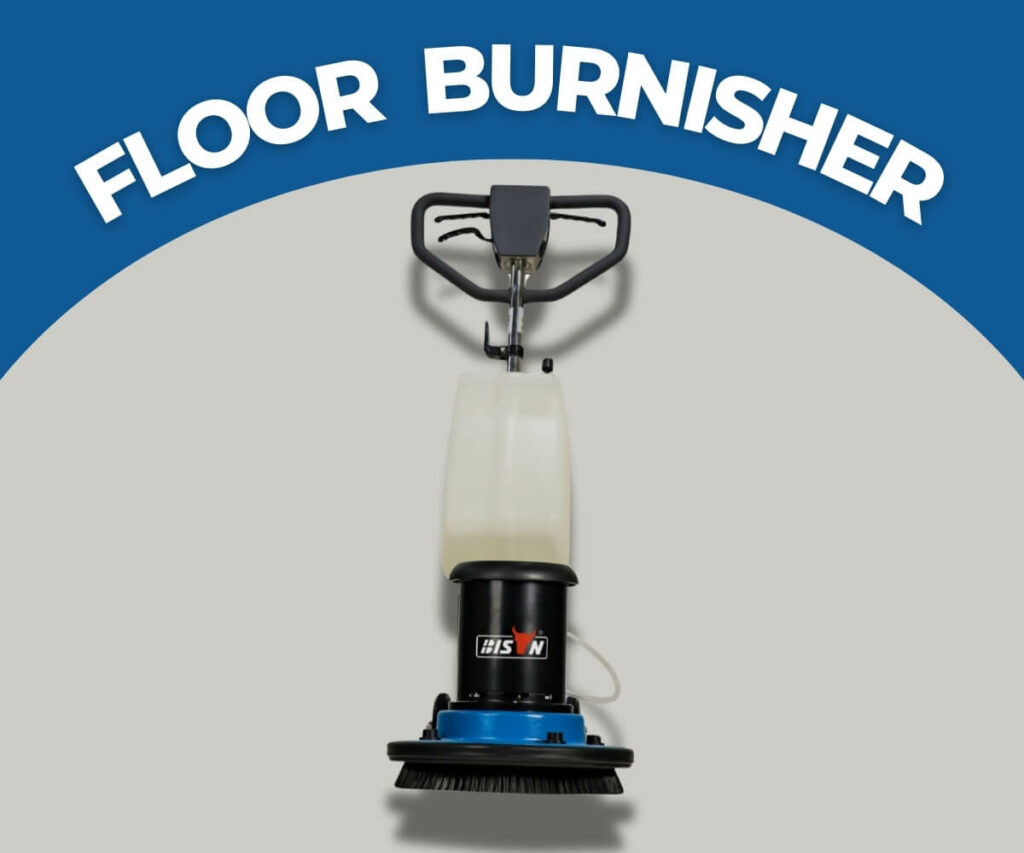
In educational institutions
Large floors in educational institutions such as schools and universities require regular maintenance. Battery-powered polishers are portable and adaptable to keep floors clean and shiny.
In building services
In the building services sector, floor burnisher keep commercial buildings clean and beautiful. Propane polishers are often used in large commercial spaces because of their powerful and efficient performance, and their high-gloss finish can enhance the polish of the building.
How to use floor burnisher correctly?
Proper use is essential to maintain the life and quality of floor burnisher. Here are some rules to follow.
- Prepare the area: Remove loose dirt or debris from the floor. It is best to sweep or vacuum before polishing.
- Choose the right polishing pad: Different polishing pads are suitable for different floor finishes and types. Choose the right polishing pad and adjust the pressure and speed of the polishing pad according to the floor type and desired finish.
- Operate the polisher: Move the polisher across the floor in a straight line with slightly overlapping movements to achieve an even polish.
- Cleaning: After polishing, clean the polishing pad and machine to prevent dust and debris from accumulating, which will affect its function.
What maintenance is required for a floor burnisher?
Regular maintenance is key to keeping your burnisher in top condition, ensuring it works efficiently and lasts longer. Here’s a guide on how to maintain your floor burnisher:
Daily maintenance checklist:
- After each use, wipe down the machine to remove dust and dirt.
- Inspect the burn pad for wear. Replace it if it shows significant signs of damage.
- Check the wheels for smooth rolling and remove any stuck debris.
- If the machine has a power cord, inspect it for cuts or frays.
Weekly or monthly maintenance:
- Inspect all wires and connections to ensure they are secure and undamaged.
- Tighten any loose screws, bolts, or parts on the machine.
- Replace worn-out burnishing pads.
- For battery-powered models, check the battery charge and clean the battery contacts.
Common problems and troubleshooting:
- Machine won’t start: Check if it’s plugged in properly, if the battery is charged, or if there’s a blown fuse.
- Streaks or uneven shine: The pad may be dirty or worn. Clean or replace it, and ensure the floor is clean before burnishing.
- Unusual noises or excessive vibration: Stop using the machine and inspect for loose parts or damaged pads.
Regular maintenance will keep your burnisher running smoothly, avoid downtime, and ensure the best performance over its lifespan.
floor burnisher purchase guide: making the right choice
Picture a gleaming hospital corridor, a spotless retail store aisle, or the high-shine floors of a bustling school or office—each surface reflecting light with a clean, professional finish. This brilliance doesn’t happen by chance. Behind the scenes, it’s the power of a floor burnisher that brings these floors to life.
what is floor burnisher?
Floor burnishers are specialized machines designed to restore shine, smoothness, and durability to hard flooring, making spaces look well-maintained and inviting. It works best on smooth surfaces like vinyl composition tile (VCT), linoleum, concrete, and terrazzo. Burnishers are often used in places like schools, hospitals, and offices to keep floors looking clean and professional.
While a floor burnisher may look similar to a floor buffer or polisher, it works differently. Buffers spin at lower speeds and are used for cleaning, scrubbing, or stripping floors. Burnishers spin much faster—usually over 1,000 RPM—and are used only for polishing. They don’t scrub or clean; instead, they restore shine to clean, finished floors by smoothing the surface and improving gloss.
The main parts of a floor burnisher include:
- Motor: Powers the machine and spins the burnishing pad.
- Pad driver: Holds the burnishing pad in place under the machine.
- Burnishing pad: The part that touches the floor and creates the polished shine.
- Wheels: Help move the machine smoothly across the floor.
- Handle or controls: Allow the operator to guide the machine and adjust settings.
science behind floor burnisher
Understanding the science behind floor burnisher operation is essential to using a floor burnisher effectively. This section explores how pressure, speed, and heat from the polishing pad during the polishing process affects the floor finish.
Effect of speed on floor finish
The speed of the polisher can greatly affect the floor finish. This rapid rotation creates friction between the polishing pad and the floor. High-speed polishers (1,500-2,500 RPM) produce a high gloss that enhances visual appeal. Slow-speed polishers (less than 1,000 RPM) are more versatile and can be used for deep cleaning, buffing, and scrubbing.
Importance of heat generation in polishing
The friction between the polishing pad and the floor creates heat. The heat slightly softens the top layer of floor wax or polish, making it easier to smooth. As the polishing pad continues to move, it presses down on tiny bumps or uneven spots. This smoothing action fills in tiny gaps and makes the surface more even. However, overheating can damage the floor. Always use a polisher with a cooling system or cool the machine periodically while it is running.
The role of pad pressure in polishing
Pad pressure refers to the pressure that the polishing pad applies to the floor, and it can significantly affect the gloss of the floor. Too much pressure can damage the floor finish, while too little pressure may not polish effectively. It is important to maintain a balance of pressure. Most floor polishers allow the pad pressure to be adjusted to suit the type of floor and finish.
Tips for choosing the right floor burnisher
Choosing the ideal floor burnisher is critical for cleaning professionals and facility managers who want to maximize cleaning efficiency, protect floor assets, and manage costs effectively. The following practical guide can help you understand the key considerations.
Evaluate your floor type and needs
The floor burnisher you choose should match the type of floor and its specific needs. Floor burnishers are best used on demanding smooth surfaces such as vinyl, terrazzo, marble, and polished concrete. They are not suitable for textured or uneven floors. Floor-specific considerations:
- Vinyl composite tile (VCT): A high-speed floor burnisher and a softer polishing pad are required to restore the shine without damaging the surface.
- Terrazzo and marble: Medium-speed polishing (1,200-1,500 RPM) with a specialized polishing pad effectively protects the surface and improves the gloss without causing scratches.
- Concrete: A more powerful motor and a more robust polishing pad are required when cleaning hard surfaces.
Some floor burnishers offer adjustable speeds or replaceable buffing pads to accommodate a variety of floor types, giving you greater flexibility.
Floor burnisher speeds and power
The motor power and buffing pad speed of your floor burnisher should be matched to the toughness of your floor. Faster machines spin the buffing pad more quickly and generally produce a shinier finish, but they can be harder to control and may require more skill to use safely and effectively.
- High-speed floor burnishers typically run at 1,500 to 2,500 RPM and create a high-gloss or “wet” finish on hard floors, such as linoleum, vinyl, or sealed wood floors. They are not suitable for unsealed or porous floors, as high speeds may cause damage.
- Low-speed floor burnishers run at less than 1,000 RPM and are versatile, suitable for scrubbing, buffing, and carpet cleaning. They are also suitable for some floors that cannot withstand high speeds (such as some stone and tile), and are great for deep cleaning and removing stubborn dirt.
Size of the area
The size and layout of your facility are key to determining the right type of floor burnisher:
- Walk-behind floor burnishers: For small to medium-sized spaces (less than 20,000 square feet). Walk-behind floor burnishers are pushed by the operator walking behind the machine. These floor burnishers are lighter, easier to maneuver, and suitable for tight spaces, corners, and around furniture.
- Ride-on floor burnishers: Best for larger areas (greater than 20,000 square feet). Ride-on floor burnishers allow the operator to sit on the machine and drive it. These machines can clean more surfaces per hour, significantly increasing productivity and reducing operator fatigue.
When selecting a floor burnisher, evaluate the expected frequency of cleaning and the target area to be cleaned per hour, and balance speed and thoroughness to meet the operational needs of your facility.
Power supply
Electric floor burnishers use a power cord that plugs into an outlet. They are reliable and suitable for a variety of cleaning jobs, but they need to be close to a power source.
Battery-powered floor burnishers operate without a power cord, increasing mobility and adaptability. They are ideal for larger areas or places where it’s hard to find an outlet. Depending on the model, they come in both high and low speeds. Battery life and charging time should be considered.
Gasoline floor burnishers are powerful and fast, making them ideal for large commercial areas that require frequent polishing. They don’t require electricity, making them very portable, but good ventilation is essential because they produce fumes. They are often used in large warehouses or factories.
Machine maneuverability and size
Large floor burnishers clean more surfaces in less time and are ideal for wide spaces, but can be challenging to maneuver in tight areas. Small floor burnishers take longer but are easier to maneuver and are better suited to spaces with obstructions or tight corners.
Budget considerations
When evaluating costs, consider the purchase price along with estimated maintenance costs, energy consumption, and the life of the machine. Choose a floor burnisher built with heavy-duty components to withstand frequent use in demanding environments. Choose a machine with easily accessible motors and a full range of parts to minimize downtime and reduce repair costs. Comprehensive warranties and a reliable service network protect your investment and reduce unexpected expenses.
Environmental Considerations
Sustainability is a growing concern in facility management. When selecting a floor burnisher, evaluate the following factors:
- Emissions: Electric floor burnishers have zero emissions onsite, which is critical in air quality-sensitive environments such as healthcare or food service. Propane-powered models, while powerful, emit exhaust fumes that may not meet indoor air standards.
- Noise level: Low-noise floor burnishers increase worker comfort and reduce disruption, especially in noise-sensitive environments such as schools or hospitals.
- Energy efficiency: Machines designed to optimize power use reduce operating costs and minimize environmental impact.
- Certifications: Look for floor burnishers that have received certifications such as the Green Seal or compliance with U.S. Occupational Safety and Health Administration (OSHA) noise standards, which indicate environmentally friendly and safe operation.
in conclusion
Floor burnishers are essential for keeping floors looking polished and professional. They create a bright, shiny finish that enhances the appearance of any space. Whether in offices, schools, stores, or hospitals, a polished floor creates a great first impression.
Regular use of a burnisher protects the floor’s finish, extending its lifespan and reducing the need for costly repairs or re-coating.
As a professional floor burnisher manufacturer in China, BISON offer reliable products backed by expert support and trusted service. When you’re ready to invest in a burnisher, choose our brand for high-quality machines designed to deliver excellent results every time.
.png)
-qbpqbzxxvtguiuwezisu6wo6j1i29b4m1el1ir1u8o.png)

